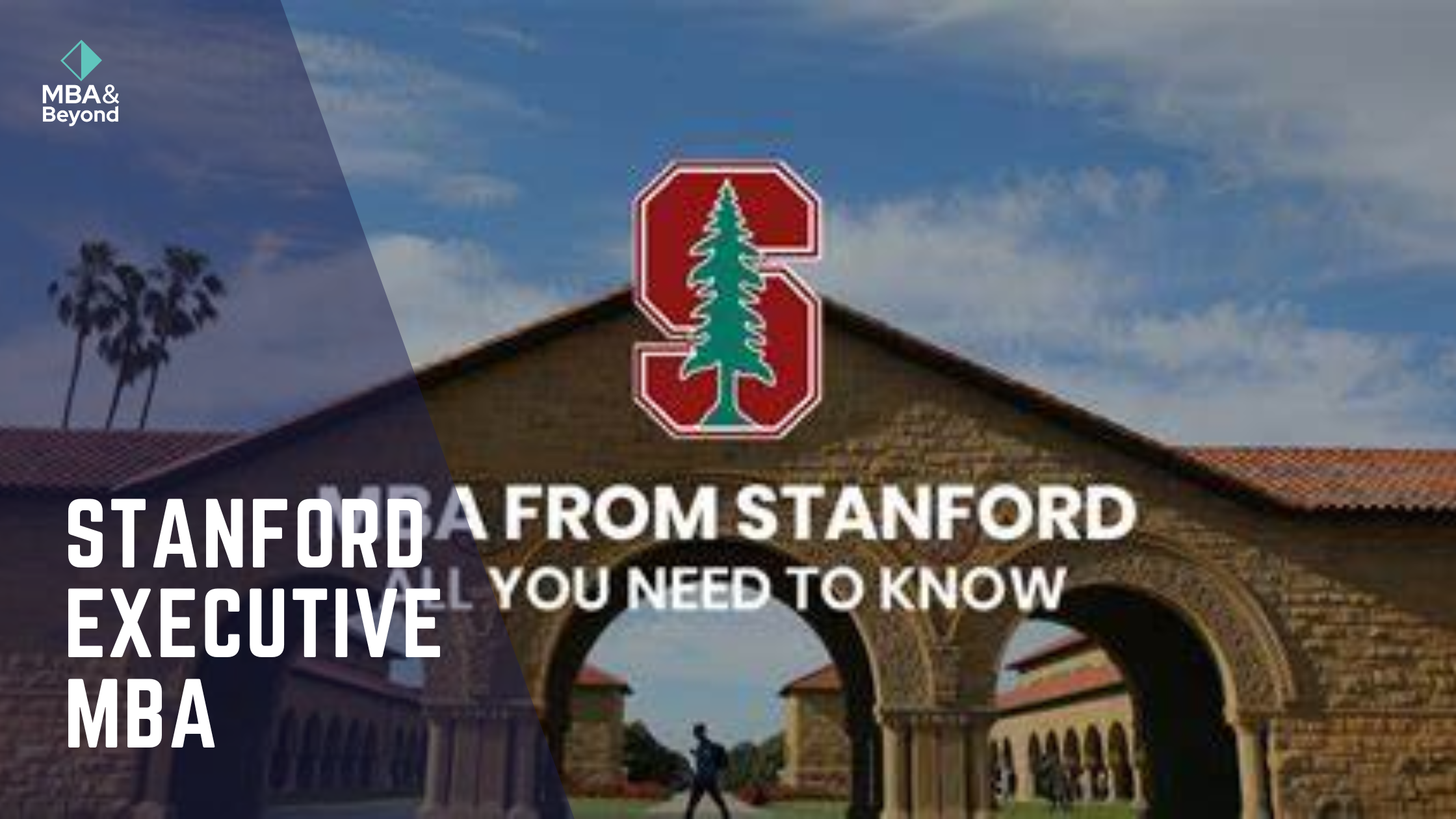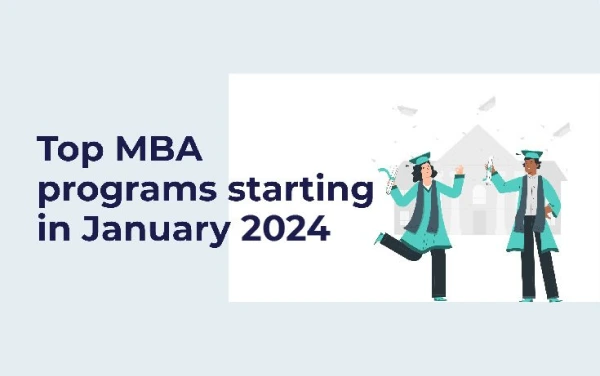Stanford Executive MBA Program

Choosing to pursue an Executive MBA (EMBA) at Stanford is more than just a decision to further your education; it’s a step towards transforming your career and personal development. Stanford’s Executive MBA Program, renowned globally for its rigorous curriculum and prestigious reputation, caters to professionals aiming to elevate their leadership skills and business acumen.
Stanford’s EMBA program stands out for its unique blend of theory and practice, designed to refine the leadership capabilities of seasoned professionals. It’s a journey that combines academic rigor with practical insights, preparing students to confront contemporary business challenges head-on.
Importance of an MBA in the Current Professional Landscape
In the fast-evolving business world, an MBA is not just a degree; it’s a catalyst for change. For professionals looking to escalate their career trajectory, an MBA from a reputed institution like Stanford can be a game-changer. It equips you with a holistic understanding of business operations, enhances your ability to strategize effectively, and broadens your professional network.
In today’s global economy, a Stanford EMBA holds exceptional value. It extends beyond mere knowledge acquisition; it’s about the opportunities it unlocks. With a Stanford EMBA, you become part of a prestigious network of professionals and attain a credential that carries significant weight in the business world.
Key Benefits of the Stanford Executive MBA Program
Extraordinary Leadership Development
Leadership is at the heart of the Stanford EMBA experience. The program is meticulously designed to refine your leadership style, making you adept at navigating complex business environments. You’ll explore various leadership models and tools, enabling you to lead effectively in diverse settings.
Statistical Insight: Stanford’s emphasis on leadership is backed by a curriculum that integrates real-world business challenges, ensuring that you’re not just learning theoretically but applying these insights practically.
Metamorphic Experience: Balancing Professional Growth with Personal Well-being
Pursuing an EMBA at Stanford is transformative. It extends beyond professional development to encompass personal growth. The program underscores the significance of harmonizing professional goals with personal wellness, urging students to cultivate a balance conducive to enduring success.
Inclusive Learning Environment: Stanford is known for its diverse cohort, which enhances the learning experience by bringing together different perspectives and insights.
Holistic Diversity: Learning from a Global Cohort
Diversity forms the foundation of the Stanford EMBA program. Engage with peers from diverse industries and backgrounds, creating a rich tapestry of experiences and perspectives. This diversity enhances the learning environment, fostering a deeper comprehension of global business practices.
Fact Check: According to Stanford’s official statistics, their EMBA cohorts typically comprise professionals from a multitude of sectors and geographies, reflecting the global nature of modern business.
Living Knowledge: Evolving Curriculum for Contemporary Business Challenges
At Stanford, the EMBA curriculum is dynamic and adapts to the most recent business trends and challenges. Courses undergo regular updates to mirror the shifting business terrain, guaranteeing that your learning remains relevant and practical.
Curriculum Relevance: The curriculum at Stanford is designed to be forward-looking, integrating topics like AI, entrepreneurship, and sustainable business practices.
Who Should Apply to the Stanford Executive MBA Program?
Ideal Candidate Profile: Senior-level Leaders and Influential Executives
The Stanford Executive MBA program is tailored for experienced professionals who are already in leadership roles or are gearing up to take on such responsibilities. Ideal candidates for this program typically include:
- Senior-level leaders at large corporations, who are looking to inject fresh thinking and innovation into their strategies.
- Executives at growing companies facing the unique challenges of scaling their operations and teams.
- Seasoned professionals who have a significant influence in their field and are motivated to drive substantial changes in their organizations or industries.
Distinguishing Features from a Full-time MBA
The Executive MBA differs from a full-time MBA in several key aspects:
- Work Experience: EMBA candidates usually have more work experience, often in senior roles, compared to full-time MBA students.
- Program Structure: The EMBA is designed for working professionals, with classes typically held on weekends or in intensive modules.
- Peer Learning: The learning experience in an EMBA is enriched by the diverse experiences of peers, who are all practicing professionals.
Application Process and Eligibility
Academic Requirements
To apply for Stanford’s EMBA program, candidates must meet certain academic standards:
- Bachelor’s Degree: A bachelor’s degree from a recognized institution is mandatory.
- GMAT/GRE Scores: While some programs may waive this requirement for experienced professionals, Stanford typically expects EMBA applicants to submit GMAT or GRE scores.
Personal Statement: Expressing Professional Motivations and Values
A critical component of the application is the personal statement. This is where you articulate:
- Professional Goals: Describe how the Stanford EMBA will help you achieve your career aspirations.
- Personal Values: Explain what drives you professionally and how it aligns with Stanford’s values.
Special Considerations for International Students
International candidates must demonstrate:
- English Proficiency: Non-native English speakers are often required to provide TOEFL or equivalent test scores.
- Cultural Adaptability: Ability to contribute to and benefit from a culturally diverse learning environment.
Insightful Tip: When preparing your application, focus on how your experiences have prepared you for the challenges of an EMBA and how you plan to contribute to the cohort’s diversity of thought.
Program Structure and Deadlines
Detailed Breakdown of Program Timeline and Deadlines
The Stanford Executive MBA program is meticulously structured to accommodate the busy schedules of working professionals. Key aspects of the program timeline include:
- Duration: The program typically spans 24 months.
- Class Schedule: Classes are usually held on weekends or in block formats to minimize disruption to professional commitments.
- Learning Modules: The curriculum is divided into various modules covering core business principles and advanced leadership topics.
Key Deadlines to Keep in Mind
Staying aware of application deadlines is crucial for prospective students. Stanford typically operates on a round-based admissions process with specific deadlines for each round.
- Round 1 Deadline: Applications are generally due in the late fall of the preceding year.
- Round 2 Deadline: A second round of applications is often due in the early spring.
- Notification Dates: Applicants can expect to receive admission decisions a few weeks after the application deadlines.
Insightful Tip: It’s advisable to apply in the earliest round you can to have the best chance at admission and scholarship consideration.
Costs and Financial Aid
Overview of Tuition and Additional Expenses
Investing in an Executive MBA at Stanford is a significant financial commitment. The program’s costs can be broken down as follows:
- Tuition Fees: As of the last academic year, the tuition for the Stanford Executive MBA was approximately $133,600.
- Additional Expenses: Prospective students should also plan for expenses related to books, materials, lodging, and travel.
Scholarship Opportunities and Financial Aid Options
Stanford offers various financial aid options to help offset the costs of the EMBA program:
- Scholarships: There are merit-based and need-based scholarships available for qualifying students.
- Loan Programs: Students may also explore loan options, both from private lenders and through Stanford’s financial aid office.
Insightful Tip: Early application can also be advantageous for scholarship consideration, as some funds are limited and awarded on a first-come, first-served basis.
Essay Writing Strategies for Application
Insights into Crafting Compelling Personal Statements
The personal statement is a critical part of your Stanford EMBA application. Here are some strategies to make your essays stand out:
- Be Authentic: Share genuine stories that reflect your personality and professional journey.
- Highlight Your Values: Stanford values innovation, leadership, and community. Reflect these in your essays.
- Demonstrate Fit: Show how Stanford’s program aligns with your career goals and how you can contribute to the program.
Tips for Showcasing Alignment with Stanford’s Values and Vision
- Understand Stanford’s Mission: Familiarize yourself with Stanford’s values and how its EMBA program is crafted to nurture leadership and innovation.
- Show Impact: Demonstrate how your previous experiences have equipped you to create a significant influence in your forthcoming positions.
- Future Vision: Discuss your long-term goals and how an EMBA from Stanford is crucial in achieving them.
Practical Tip: Utilize Stanford’s essay prompts as an opportunity to demonstrate your unique perspective and how it aligns with the values of the EMBA program.
Conclusion: Summarizing the Transformative Potential of the Stanford Executive MBA
The Stanford Executive MBA program isn’t merely an academic endeavor; it’s a transformative voyage that redefines your perception of business, leadership, and personal development. Tailored for seasoned professionals, it empowers individuals to elevate their careers, broaden their horizons, and create significant contributions in their fields of expertise.
Key Takeaways:
- Leadership and Personal Growth: The EMBA at Stanford is a comprehensive program that focuses on developing extraordinary leadership skills while encouraging personal well-being and growth.
- Global Perspectives: With its diverse cohort and globally oriented curriculum, Stanford provides a unique environment to learn from and with the best.
- Tailored for Executives: The program is specifically designed to fit the busy schedules of working professionals, ensuring a balance between work, study, and personal life.
- Financial Investment and Return: While the cost of the program is considerable, the potential ROI in terms of career advancement, salary increase, and network expansion is significant.
- Application Strategy: A strong application with authentic essays that align with Stanford’s values can greatly enhance your chances of admission.
Final Thoughts for Prospective Applicants:
If you’re a student looking to study abroad and considering an Executive MBA, Stanford stands out as a premier choice. The program offers more than just business education; it’s a gateway to a community of global leaders and a platform for significant professional transformation. With its rigorous curriculum, diverse cohort, and focus on leadership and innovation, the Stanford EMBA can be a pivotal step in your career.
For those who dream big and are ready to invest in their future, the Stanford Executive MBA is more than just a degree – it’s a life-changing experience that opens doors to endless possibilities.





Leave a Reply